June 2, 2023
Air Date: June 2, 2023
FULL SHOW
SEGMENTS
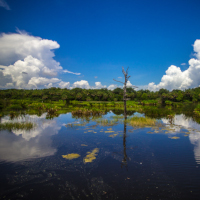
Supreme Court Strips Away Wetlands Protections
View the page for this story
In a decision reversing five decades of legal precedent, the U.S. Supreme Court effectively stripped environmental protections from nearly half of the wetlands in the nation. Veteran environmental lawyer Pat Parenteau joins Host Steve Curwood to explain the ruling and its impact. (12:05)
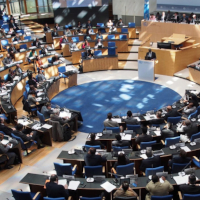
Taking Stock of Climate Progress
View the page for this story
Delegates gather starting June 5 in Bonn, Germany to discuss loss and damage for vulnerable countries and progress under the 2015 Paris Climate Agreement, key issues leading up to COP28 in Dubai later this fall. David Waskow of the World Resources Institute joins Host Jenni Doering to give a preview of the agenda at Bonn and the controversy over the incoming COP28 President, an oil executive. (08:05)
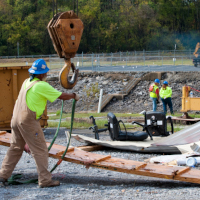
Environmental Justice for All of Government
View the page for this story
President Biden recently created a White House Office of Environmental Justice to coordinate EJ efforts across all federal agencies. EPA Region 4 Administrator Daniel Blackman joins Host Steve Curwood to discuss how the office can help address the disproportionate pollution and climate-related damages that environmental justice communities in the Southeast U.S. often suffer. (08:36)
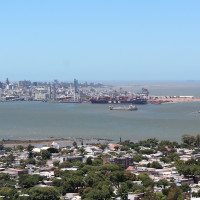
Beyond the Headlines
/ Peter DykstraView the page for this story
This week, Living on Earth contributor Peter Dykstra joins Host Jenni Doering to share news of Uruguay’s salty tap water as a severe drought has forced managers to use estuary water to boost supply. Also, new research links plastic waste clogging up storm drains to a deadly flood in Mumbai in 2005. And in history, they wish Bryce Canyon National Park a very happy 100th birthday. (04:35)
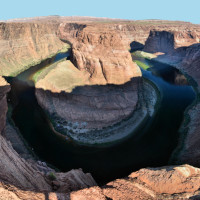
Curbside Capture of Desert Rain
View the page for this story
Thirty years ago, a neighborhood group in Tucson started harvesting local rainwater by directing runoff into street-side basins filled with native, food-bearing plants. Co-founder Brad Lancaster joined Living on Earth’s Bobby Bascomb to tell how “planting the rain” improves neighborhoods, builds climate resilience, and helps the desert bloom. (12:02)
Show Credits and Funders
Show Transcript
230602 Transcript
HOSTS: Steve Curwood, Jenni Doering
GUESTS: Daniel Blackman, Brad Lancaster, Pat Parenteau, David Waskow
REPORTERS: Peter Dykstra
THEME]
CURWOOD: From PRX – this is Living on Earth.
[THEME]
CURWOOD: I’m Steve Curwood.
DOERING: And I’m Jenni Doering.
The US Supreme Court rolls back some clean water protection rules that have been used for more than 50 years.
PARENTEAU: This idea that a decision from a tiny little wetland in northern Idaho now controls the scope of regulation of water quality throughout the entire United States is really unprecedented.
CURWOOD: Also, harvesting rainwater to fight drought in the west.
LANCASTER: We should be using rainwater as our checking account water, you know, the water you use on a daily basis. And our groundwater or Colorado River water, that should be the savings account that you don’t touch, except for extreme times of need, like an extreme drought year.
CURWOOD: That and more this week on Living on Earth – stick around!
[NEWSBREAK MUSIC: Boards Of Canada “Zoetrope” from “In A Beautiful Place Out In The Country” (Warp Records 2000)]
[THEME]
Supreme Court Strips Away Wetlands Protections
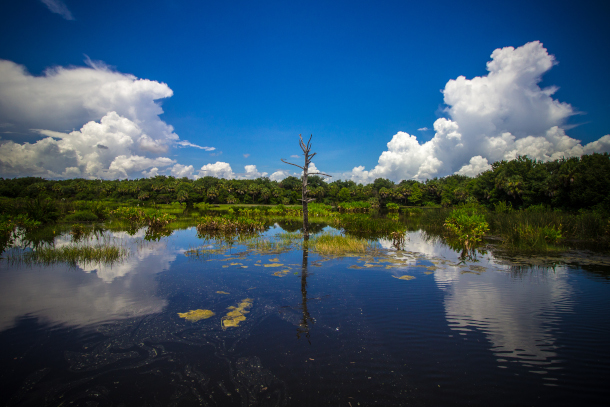
The Waters of the United States (WOTUS) are protected under the Clean Water Act of 1972, and now the Supreme Court has redefined which waters apply. (Photo: Robin Mehdee, Flickr, CC BY-NC-ND 2.0)
DOERING: From PRX and the Jennifer and Ted Stanley Studios at the University of Massachusetts Boston, this is Living on Earth. I’m Jenni Doering.
CURWOOD: And I’m Steve Curwood.
On May 25th, the United States Supreme Court effectively stripped environmental protections from many waterways, including nearly half of the 118 million acres of wetlands in the nation. The decision reverses much of the regulatory authority used by agencies for more than fifty years under the 1972 Clean Water Act. All nine justices agreed that after years of litigation the Sackett family in Idaho had been improperly blocked from construction on a wetland near a lake, under an appeals court ruling that had cited “significant nexus,” a term all the justices found to be too vague. But then five of the most conservative justices went much further. As a young lawyer, Pat Parenteau helped Congress deal with wetlands issues. He is now an emeritus professor of law at Vermont Law School and he’s here to help us make sense of it all. Pat, welcome back to Living on Earth!
PARENTEAU: Hey, Steve, it's good to be back with you.
CURWOOD: What exactly is this ruling that Supreme Court has come to now?
PARENTEAU: So, the Supreme Court has now said the only waters that are protected under federal law, under the Clean Water Act, are those waters that are relatively permanent, this would be big rivers, big lakes, and of course, the oceans, and wetlands that abut or adjoin those big water bodies and are indistinguishable from the big water bodies.
CURWOOD: Let me see if I understand this ruling correctly. So if there is a place that rains come to occasionally, and there's flash flooding from that, to what extent does this now mean that such places are not covered by the Clean Water Act?
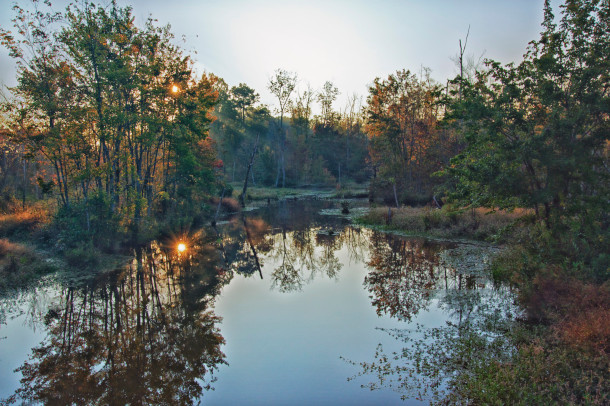
Wetlands conservation is critical to combatting biodiversity loss and climate change. (Photo: Jim Liestman, Flickr, CC BY-NC-ND 2.0)
PARENTEAU: Yes, we call those streams ephemeral streams. And they only flow in response to major rain events. So those are out now. Historically, they have been protected. This new decision raises a real question about whether any intermittent stream is still protected. We'll have to wait to see how EPA and the Corps interprets this decision, because now they're going to have to go back yet again for almost the fourth time, in the last, say, 10 years, and come up with a new rule. So, we don't really know the full extent of the impact this Sackett decision will have. We know it's going to greatly reduce federal protection for streams and wetlands across the United States. There are some estimates that have predicted it will mean the loss of protection for over 50% of the wetlands in the United States. So it's honestly a devastating blow to water quality, and to wetland conservation and wetlands in particular.
CURWOOD: And in your words, why are wetlands important?
PARENTEAU: When you think about the two major global challenges that are facing us today, it's climate change and it’s biodiversity loss. And wetlands are critical to both of those. Wetlands store carbon, wetlands store floodwaters. So they're very important to both climate mitigation and adaptation. And they are the home of over half of the listed endangered species in the United States. So, the United States Supreme Court has dealt a devastating blow to natural resources in the United States.
CURWOOD: Pat, help me here. I'm a bit confused by this ruling, because it looks like all nine members of the Supreme Court ultimately concurred in the decision. But there seems to be a lot of dissent. Who voted for what, and why?
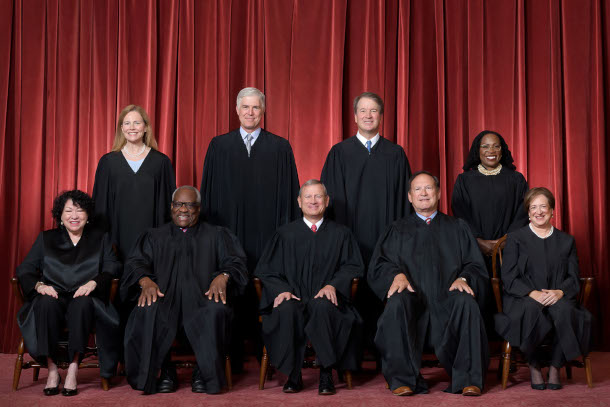
The Roberts Court is composed of nine Justices, six of whom lean conservative. Back row (left to right): Amy Coney Barrett, Neil Gorsuch, Brett Kavanaugh, and Ketanji Brown Jackson. Front row (left to right): Sonia Sotomayor, Clarence Thomas, Chief Justice John Roberts, Samuel Alito, and Elena Kagan (Photo: Fred Schilling, Collection of the Supreme Court of the United States, public domain)
PARENTEAU: All nine voted that the Sacketts should win based on the significant nexus test. But five justices led by Justice Alito voted for three things. One, the significant nexus test that the Ninth Circuit used was wrong. Two, that the Sackett wetland was not protected by the Clean Water Act. And three, the big one, for all future jurisdictional determinations, the agencies must now use the following two tests. One, the river, the stream, the lake, the pond, all of those water bodies must be relatively permanent, like big rivers, big lakes and the ocean. And two, wetlands, in order to be jurisdictional, must immediately adjoin those major water bodies, okay? Five justices, Alito, Thomas, Gorsuch, Barrett, and Chief Justice Roberts, that's the majority vote. The other four justices, Kavanaugh, Kagan, Sotomayor, and Jackson, agreed that the significant nexus test was not the proper test, and that the Sackett wetlands were not protected by the Clean Water Act. But those four justices completely rejected this new test of relatively permanent rivers and streams and lakes, and only adjoining wetlands. That's what those four voted for.
CURWOOD: Pat, the current makeup of the US Supreme Court leans conservative, with six of the nine justices appointed by Republican presidents, three alone by President Trump. To what extent did the Sackett decision split down the lines of conservative versus liberal, or what kind of crossover is there on this issue?
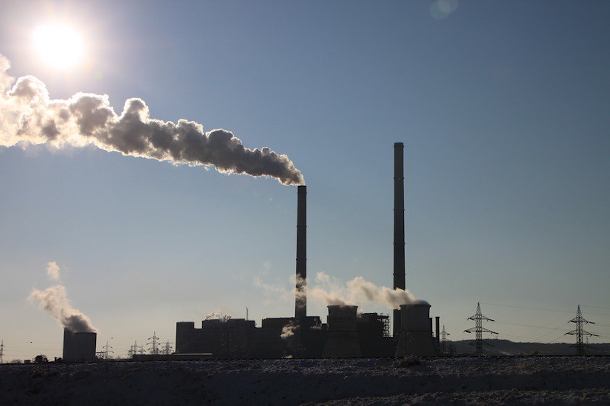
The 6-3 ruling in West Virginia v. EPA holds that EPA needs clearer direction from Congress in order to regulate emissions from power plants by requiring states to use more gas, solar and wind to generate electricity. (Photo: Emilian Robert Vicol, Flickr, CC BY 2.0)
PARENTEAU: Here's the thing. The judgment means we're reversing the Ninth Circuit's use of this significant nexus test. So, on that point, the liberal wing of the court, including Justice Kavanaugh, who's not a member of the liberal wing, they all agreed that that was the wrong decision by the Ninth Circuit. But Kagan and company would have stopped at that point, and not gone further and developed this brand-new test that I've described, to control all the waters of the United States. They said that's overreach by the Court. The most interesting opinion was by Justice Kavanaugh, who agreed that the significant nexus test was wrong, but he vehemently disagreed with Justice Alito's decision to rewrite, in essence, the jurisdiction of the Clean Water Act. He said, you've ignored 45 years of precedent, including precedents by the Supreme Court, across eight different administrations, and countless number of Congresses. You've just completely overridden all of that history, both judicial and legislative, and come up with your own policy decision on what waters should be protected. Very strong language from Justice Kavanaugh. So that's very striking. No surprise that the Kavanaugh opinion was joined by Justices Kagan, Sotomayor, and Jackson. Kagan also wrote her own opinion, which was even more scalding and basically saying, this Court is losing the respect it needs, in the way that we are making decisions that lack the kind of respect for precedent, the kind of deference to the expert agencies, deference to Congress's decisions about what the purposes of these laws are and why they're important, and arrogating, to itself, decisions that simply don't belong in this Court, in the Supreme Court. So, I think you're seeing that now we have, you know, a more authoritarian kind of ruling coming out of the Court, leaving the agencies with very little discretion about how to adapt to the different topographical, hydrological conditions that exist in the United States. This idea that a decision from a tiny little wetland in northern Idaho now controls the scope of regulation of water quality throughout the entire United States is really unprecedented.
CURWOOD: Now, Pat, in 2022, the Supreme Court also limited the EPA's power in terms of the Clean Air Act. And when we talked to you about that, you said it was disheartening to see the Court make that decision. How are you feeling now after this wetlands case, after this waters of the United States case?
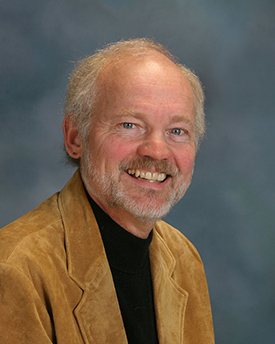
Pat Parenteau is emeritus professor of law at Vermont Law School and formerly served as EPA Regional Counsel. (Photo: Courtesy of Vermont Law School)
PARENTEAU: I've got my life's work tied up in clean water and wetland protection. That's what I've done my whole career. And to see it so cavalierly thrown aside, is soul-crushing. You have to wonder now as an environmental lawyer, is any of these environmental rules safe from this Court, right? The West Virginia case dealt a devastating blow to EPA's authority to regulate greenhouse gases from power plants. And even worse than that, did so using this new doctrine called the major question, which basically means the Supreme Court will decide, without regard to the agency's views at all, what the words of a statute mean, even where Congress has been intentional to leave open interpretation of some of the text that they write into the laws simply because Congress realizes it doesn't know everything. It can't spell out, in detail, every aspect of every environmental regulation on the books. It has to rely on expert agencies to use their expertise in judgment to fill in the gaps. So that's what is so disturbing about where we are today with what the Supreme Court is doing to environmental law. It is dismantling it, one by one. These are the two major statutes: air quality, water quality. These are the laws that began the environmental era in the United States, and they have blown holes in both of those major pillars of environmental law. What's next, is the question.
CURWOOD: Pat Parenteau is a former EPA regional counsel and emeritus professor at Vermont Law School. Pat, thanks so much for taking the time with us today.
PARENTEAU: You're very welcome, Steve. I wish it could have been a happier moment.
Related links:
- Supreme Court | “Sackett v. EPA”
- Supreme Court | “West Virginia v. EPA”
- EPA | “Statement on Supreme Court Decisionin Sackett v. EPA”
[MUSIC: BLKBOK, “Leave the Door Open [Silk Sonic Piano Cover]” from the CVRART Mixtape and on Best Friend, by Bruno Mars and Anderson Paak]
DOERING: Coming up – negotiations continue as nations come together to tackle climate change. Keep listening to Living on Earth.
ANNOUNCER: Support for Living on Earth comes from Sailors for the Sea and Oceana. Helping boaters race clean, sail green and protect the seas they love. More information at sailorsforthesea.org.
[CUTAWAY MUSIC: Earl Hines, “I Gotta Right to Sing the Blues” on Tour de Force (remastered), by Arlen & Koehler/arr. Hines, 1201 Music]
Taking Stock of Climate Progress
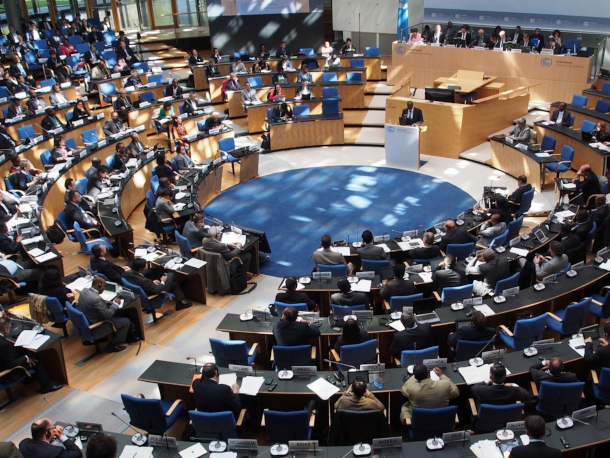
The U.N. climate change conference in Bonn, Germany, will kick off on June 5th. Above, a session takes place at the Bonn headquarters of the U.N. Framework Convention on Climate Change. (Photo: Shubert Ciencia, Flickr, CC BY-NC 2.0)
CURWOOD: It’s Living on Earth, I’m Steve Curwood.
DOERING: And I’m Jenni Doering.
Delegates gather starting June 5th in Bonn, Germany, to prepare for COP28, the annual UN climate treaty meeting in Dubai in late fall. The topics include loss and damage for vulnerable countries and progress under the 2015 Paris Climate Agreement. But there’s controversy about the host country’s chosen President of COP28, Sultan Al Jaber, chief of the UAE state oil company.
BOEVE: It's like appointing the head of Smirnoff to an Alcoholics Anonymous meeting. [LAUGHS] Who are we kidding here, you know?
DOERING: That was May Boeve of 350.org when we spoke to her back in January. In recent weeks some members of Congress and the European Parliament have also pressed for Sultan Al Jaber to step aside. David Waskow is Director of the International Climate Initiative at the World Resources Institute, and he’s here to give us a preview of the agenda at Bonn. Welcome back to Living on Earth!
WASKOW: Great to be with you.
DOERING: So why are these talks in Bonn, Germany, so important?
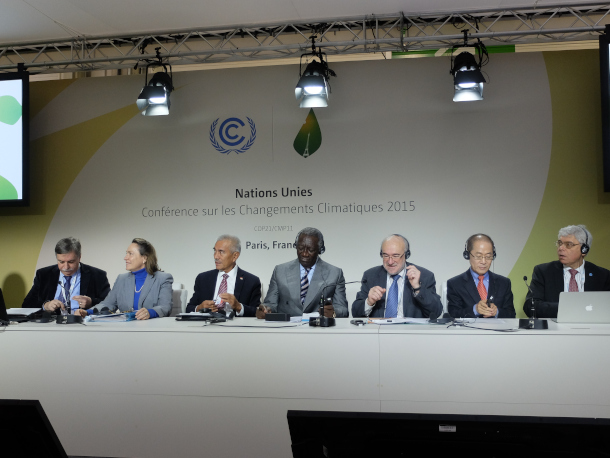
Delegates to the June conference will continue working on the first “global stocktake,” which will evaluate the world’s action on climate change and consider pathways for the future. The stocktake is part of the Paris Agreement, adopted at the COP 21 talks in 2015. (Photo: World Meteorological Organization, Flickr, CC BY-NC-ND 2.0)
WASKOW: Well, this year is an interesting and important year, because it is the first time that we're having what's called the global stocktake in the UN climate negotiations. That's something that came out of the Paris Agreement and it's part of a process every five years to increase the level of action, strengthen the kinds of action that countries are taking on climate change. And this leads up to a point in 2025, when countries are supposed to come forward with new commitments. But it also can be a point to really generate and mobilize greater action, stronger action. The “stocktake” name suggests that it's an assessment, and it is in part an assessment. And we heard from the Intergovernmental Panel on Climate Change a couple of months ago, how serious and dire in many ways the situation is. That as things stand, if we continue on our current course, we'll probably bust through the iconic limit of 1.5 degrees Celsius in the early 2030s. And so that's a key part of the assessment is to understand where we are. But this isn't only an assessment. This is a moment that also has to be a global springboard and really carry us forward to do the fundamental change that we need in order to keep temperature change at the levels that are needed so that we can avoid impacts that are essentially calamitous, at the very least extremely dangerous.
DOERING: Well, David, there have been growing calls from members of the US Congress and European Parliament for the United Arab Emirates to replace its pick to lead COP28. Sultan Al Jaber is their pick, and he's CEO of the UAE's state oil company, which basically means a fossil fuel executive would be leading the world's major conference to deal with climate change. So how does that line up with this global stocktake and the ambition that's needed? And what do you think the UAE presidency needs to do to regain credibility at these talks?

Delegates to the COP 27 talks in 2022 established a Loss and Damage Fund, with the aim of repaying vulnerable countries harmed by climate change – but Waskow says agreeing to set up the fund is only the first step in achieving that goal. (Photo: UNclimatechange, Flickr, CC BY-NC-SA 2.0)
WASKOW: So rather than focus on personalities, I think it's critically important to focus on substance. And it's clear that fossil fuels and the direction we take on fossil fuels will in fact be very central to this COP at the end of the year. What we clearly need to do as a world is to rapidly and equitably transition away from fossil fuels. And we need to also pursue the other options that we clearly have at hand, that includes ramping up renewables. And the International Energy Agency has said that by 2030, so just seven years from now, there needs to be a ratio of nine times more clean energy investment than dirty energy investment. We're not nearly there, we're maybe hovering around a little bit over parity, a little bit more clean energy than dirty energy investment. We are starting to see, and I think, in fact, the UAE Government has said that it supports, the notion that we need to triple renewable energy by 2030. And that's a big deal. That would be a lot of additional renewables. Those are the kinds of things that we need to see out of this COP. It's countries coming together to say we are going to pursue those transitions rapidly away from fossil fuel use and production. That is something that many countries have already indicated their support for, certainly many of the most vulnerable countries around the world have done so. And that now needs to be translated into the kind of results we want to see out of this negotiation.
DOERING: Well, the United Arab Emirates, which is hosting the next COP 28, this fall, they are a major fossil fuel-producing country. So what have they signaled about how they're feeling about this plan to phase the world off of fossil fuels?
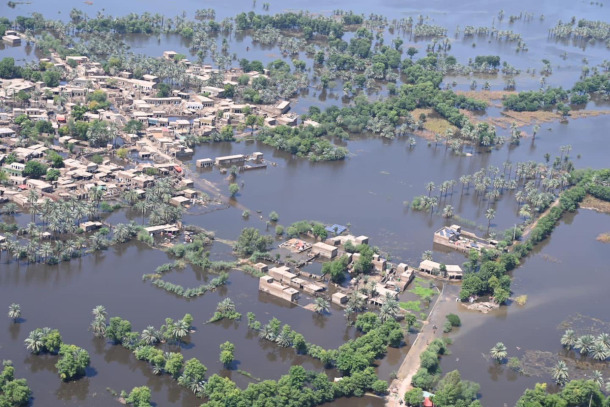
The Intergovernmental Panel on Climate Change has made clear that climate hazards will be significantly more severe at 2°C of warming than at 1.5°C. Above, the aftermath of heavy monsoon rains in Sindh, Pakistan. (Photo: Ali Hyder Junejo, Flickr, CC BY 2.0)
WASKOW: Well, they have said that they want to phase out fossil fuel emissions. I think that the reality with that is that although they may be thinking largely, or partly at least, in terms of carbon capture and storage, at the end of the day to actually achieve what they've said requires us to transition rapidly away from fossil fuel use. So that's where they stand. Just on the presidency, the COP presidency in general, the role of the presidency really needs to be, I would say two things. One is to create the space for a real open and fair conversation on these issues. The other is to also make sure that we're aiming for the highest ambition possible, that we really are trying to strengthen action as much as possible and moving in that direction. So those are the two tasks of this or any COP presidency, and the test is in how this moves forward. And it's really an issue of substance, I think and how the COP presidency actually goes about its work.
DOERING: One of the key topics at COP 27 in Egypt last year was loss and damage. How big of a focus do you think loss and damage will be at Bonn?
WASKOW: Last year, we did have an important decision on creating a fund on loss and damage to support countries who are facing conditions, climate impacts, that they can't adapt to. That was the first step. And we're now seeing a process to set up a fund and funding arrangements. That will continue, there's sort of a separate stream of a process. But at this upcoming COP, we very much need to see that fund put into operation. Countries are already bearing these impacts. I mean, we see it even in the United States. And then imagine if you're in a small island country, or you're in a least developed country, what the impacts are and what the implications are. And that's only going to grow over time. And so we can't step away from that reality. This is what it ultimately is all about, is what happens to people, what happens to ecosystems. And so we really do need to continue to press forward on this loss and damage front. We also need to take action to build resilience and enable communities to adapt to the climate impacts that they're facing, so that the loss and damage is actually reduced to some degree. There is a lot that can't be adapted to, that we can't build resilience to. But where we can, we need to really resource that. And that, that has been a little bit on the sidelines recently, but I think needs to come very much back to the forefront.

To achieve an energy sector with net-zero carbon dioxide emissions by 2050, the world needs to more than triple its yearly investment in clean energy by 2030, according to the International Energy Agency. (Photo: kboul, Flickr, CC BY-NC 2.0)
DOERING: Can you give us any insight into the overall mood of delegates going into these talks in Bonn, Germany, starting June 5th?
WASKOW: Well, I think the world right now is in a lot of flux. We're seeing that with the war in Ukraine. We're seeing that with relations among other governments, US and China, for example. And at the same time, the world is in flux in other ways. We are seeing a significant ramping up of renewable energy, a real shift in terms of the growth of electric vehicles. So I think the world is sort of shifting under our feet. We're also seeing increasing climate impacts. So things are very much in flux. And I think that is really the context in which we are entering these negotiations and exactly how and even whether countries and negotiators are going to be able to put their hands around some concrete takeaways. That's the issue in the midst of all of this flux.
DOERING: David Waskow is director of the International Climate Initiative at the World Resources Institute. Thank you so much, David.
WASKOW: Thank you. It was terrific to be with you.
DOERING: And safe travels to Bonn next week.
WASKOW: Yes, thank you so much.
Related links:
- Read about the upcoming conference in Bonn
- Learn more about the “global stocktake”
- Read about the Loss and Damage Fund established at COP 27
- Refresh your memory of the Paris Agreement
[MUSIC: Peter Calo, “The Old Chisholm Trail” on Cowboy Song, Traditional/public domain/arr.Peter Calo, Tune Stew (a division of North Star Music)]
Environmental Justice for All of Government
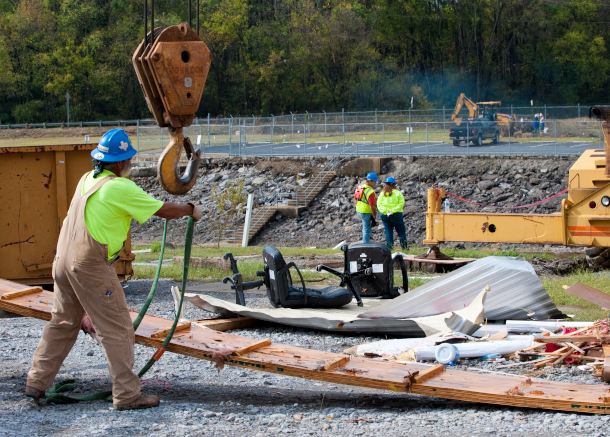
The EPA enlists aid from other governmental agencies such as Health and Human Services and FEMA to respond to severe weather events. (Photo: Chickamauga Tornado, Flickr, CC BY-SA 2.0)
CURWOOD: During his first week as President, Joe Biden sought to meet his campaign pledge to address the disproportionate impacts of climate disruption and pollution on disadvantaged communities by creating the White House Environmental Justice Advisory Council. But soon it was obvious mere advice would not be enough, so then he established a White House Office of Environmental Justice to impose accountability and reporting requirements across the government. The White House has yet to name a federal Chief Environmental Justice Officer to head this EJ enforcement operation, but there are already some environmental justice cops on the beat, including Daniel Blackman, administrator for EPA’s Region 4. His region stretches from Mississippi to Kentucky to North Carolina and Florida, with numerous disadvantaged communities plagued by industrial and livestock waste pollution and climate-related hurricanes and tornadoes. And he joins me now from Atlanta. Welcome to Living on Earth, Administrator Blackman.
BLACKMAN: Happy to be a part of this conversation.
CURWOOD: So, President Biden has formed the White House Office of Environmental Justice and called for EJ to be looked at for all of government. What does that mean for Region 4 of the EPA?
BLACKMAN: It's really a great opportunity in this administration to prioritize the commitment and the focus the President has, by making sure that these agencies, including EPA, are not working in silos. As it relates to Region 4, we have a longstanding relationship with how we work with what's called interagency collaboration, when storms or major weather events happen. We are very capable of working with our federal family, that's, you know, Health and Human Services, FEMA, HUD, Department of Energy, you know, we all play a critical role. And the President's commitment is to make sure that we are not only efficient in our communication, but that we are working tirelessly to ensure that these organizations and these groups are on the same page. And I'll give you one really quick way of how that works for us. And that's in Selma, Alabama, the President had a chance to speak in Selma. And within 72 hours, he deployed each of the federal agencies to respond to how we're going to have an impact right here in Region 4 with Selma, Alabama, as it relates to recovery from an economic standpoint. We had already had people on the ground dealing with storm recovery from a recent tornado. And we immediately jumped into action with our federal family, led by Mitch Landrieu, who's a senior adviser to the President, on how we would communicate, and it's been a great opportunity to see it all work in motion.
CURWOOD: So, give me the broad picture for a moment here. I mean, overall, what changes throughout government do you hope, expect, to see from the establishment of the White House Environmental Justice Office? What's the big picture here?

The Category 4 Hurricane Michael devastated the city of Port St. Joe and many other Florida communities in 2018. (Photo: Florida Fish and Wildlife, Flickr, CC BY-NC-ND 2.0)
BLACKMAN: The big picture is to make sure that we, number one, are not checking the box. And I can't stress enough how much Administrator Regan from day one has been on the ground with each and every one of the regional administrators from around the United States. And that started off with the Journey to Justice, we were very adamant about making sure that we went into communities in Region 4 like Jackson, Mississippi, we wanted to make sure that we considered areas like Lowndes County, Alabama, and areas that touch Region 6, Region 5, and other areas, because we wanted to take a proactive approach to not, again, checking the box, right? Because it's easy to say we showed up at a meeting, it's easy to say that we gave a grant. But what we recognize is that when you're working with federal agencies and communities have suffered from what we categorize as meeting fatigue, right, administration to administration, decade to decade, these communities have just wanted somebody to show up and follow through. And that's really what this opportunity does. It doesn't allow EPA or HUD or FEMA or Army Corps of Engineers to be on an island. It allows us to all work collaboratively in our communication, our follow up, but most importantly for me, our community engagement. So when you think of the public comment period, when you think of community engagement and follow up, I have a civil rights background, I know what it's like to sit on the other side of the table. And it is not a good feeling when you spend time away from your family, when you're spending time on behalf of hardworking community members that can't make a meeting because they're working two or three jobs, hardworking families that are trying to keep their lights on and keep food on the table. And we want to make sure that in doing this collaborative effort, we're able to communicate across the board and not have six, seven, or eight conversations or virtual meetings that could be resolved when everyone is at the table in the room. And that's what we aim to do through the Biden-Harris administration.
CURWOOD: Now, some recent studies have forecast that weather conditions that give rise to tornadoes are likely to increase by as much as, say, 6% or more by the end of the century because of climate change, and that the warming climate will bring and is bringing tornadoes further east, right into your region. So tell me, what is the role of the EPA in dealing with this? And how can you and your Region 4 colleagues work together with other agencies to help people cope with these horrible storms?
BLACKMAN: You know, I'm pretty proud of Region 4, man. I mean, prior to me getting into the region, we already had a great relationship on preparedness with states like Mississippi, Alabama, and especially Florida, right? I mean, Region 4 has worked with state and local government, we've worked with our tribal communities, we've worked with our federal partners on preparedness, but also the ability to respond on emergencies such as tornadoes and extreme weather events, that also brings along with it flooding in so many other areas. And it's not just a tornado -- it's how we respond, for example, to oil discharges, hazardous material releases, these are things that happen in an ongoing process. And as these storms continue, we have to protect air, we have to protect water, and if a state knows or suspects that there's any discharge, release, contamination, we have mobile labs that come right out of our Athens, Georgia, office that can be deployed at a moment's notice. We're very, very privileged to have a fleet that can respond, to have individuals that are in our diving program -- a lot of folks don't know that there's a scientific diving program within EPA, right? We have the capacity, we have the manpower, we have the resources, the funding, and the opportunity to not only address these catastrophic incidents, but we have the ability to do it in a way where we can mitigate the challenges and actually be much more prepared, knowing the strength of these storms that is coming because we have the data. But we're also working with federal agencies to share information that show how these impacted areas are continuing to be impacted, and how we can make our responses quicker.
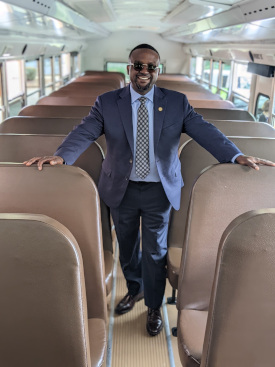
Daniel Blackman was appointed to serve as the EPA Region 4 administrator by President Biden in November 2021. He stands here on an electric school bus. (Photo: Courtesy of Daniel Blackman)
CURWOOD: Now, given that the people who are most impacted often by these disasters tend to be poor and people of color, what's the environmental justice component to these disasters, do you think?
BLACKMAN: No better answer I can give you specifically in the state of Florida than a community right outside of Panama City Beach, Florida: Port St. Joe. They were impacted by the same hurricane, Hurricane Michael in 2018. This community had not recovered. Okay, I'm going to say it again, for your listeners, this community had not recovered. It was a predominantly Black and Brown community, predominantly poor, and had gone two and a half years after 2018 with no ability to fully recover. I'm very proud to say today that that EJ community, that had struggled like many EJ communities to write competitive grants, that had struggled like many environmental communities to just get the support from a grassroots standpoint on the urgency of low- and moderate-income communities -- through the Bipartisan Infrastructure Law, Justice 40, and our competitive grants that we have, we gave almost a million dollars in funding just for environmental planning, climate contingency, workforce development, and helping to spearhead the effort with local and state partners for them to, you know, quite frankly, have a hand-up and not just a handout. These individuals, they weren't begging the federal government to come in and fix their problem. They wanted to be able to rebuild their communities by themselves. They wanted to be able to come in and go and work with their churches and their faith institutions and their schools. And they wanted to build something special with the young men and women that were going to call Port St. Joe home for the next 20 or 30 years, right. And there's a Native American proverb that we have that says, "We do not inherit the planet from our ancestors. We borrow it from our children." So when I think about environmental justice, I think about future generations that are going to have to be able to survive and coexist based upon the decisions we're making today.
CURWOOD: Well, I want to thank you for taking the time with us today. Daniel Blackman is the Region 4 Administrator for the US Environmental Protection Agency. Thank you so much, sir.
BLACKMAN: Thank you, sir.
Related links:
- Read more about the EPA’s Region 4
- Learn more about the White House Environmental Justice Advisory Council
- The New York Times | “Biden to Create White House Office of Environmental Justice”
- NPR “All Things Considered” | “In Florida, Port St. Joe Mayor Discusses Impact of Hurricane Michael”
- Daniel Blackman EPA Biography
[MUSIC: Nakai-Eaton-Clipman-Nawang, “Aspen Wind” on In a Distant Place, by R. Carlos Nakai, William Eaton, Will Clipman & Nawang Kheehog, Canyon Records]
DOERING: Coming up, how harvesting rainwater can help desert cities keep blooming. Stay tuned to Living on Earth.
ANNOUNCER: Support for Living on Earth comes from Friends of Smeagull the Seagull and Smeagull’s Guide to Wildlife. It’s all about the wildlife right next door to you! That’s Smeagull, S - M - E - A - G - U - L - L, SmeagullGuide.org.
[CUTAWAY MUSIC: Juan Martin, “Suite IV – Cadiz” on The Andalucian Suites, by Juan Martin, FLAMENCOvision]
Beyond the Headlines
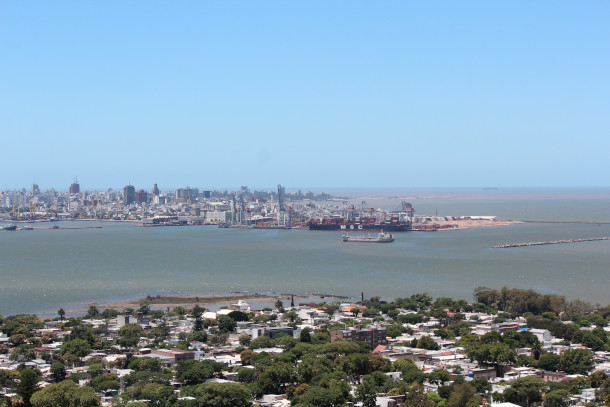
Uruguay is using salt water from the Rio De La Plata to replenish drinking water resources. (Photo: Tania Malrechauffe, Unsplash, Fair Use)
CURWOOD: It’s Living on Earth, I’m Steve Curwood.
DOERING: And I’m Jenni Doering.
DOERING: It's time now for a look beyond the headlines with Peter Dykstra. He's Living on Earth’s contributor and he joins us from Atlanta, Georgia. Hey, Peter, what do you got for us this week?
DYKSTRA: I'm doing well, Jenni, hope you are too. There's news from the south, not the south like here in Georgia, but the south-south in Uruguay. There's a severe drought going on there, and one of the main reservoirs is as low as 5% of its capacity. That's lower than the heavily-taxed Lake Mead and Lake Powell, out in the western US. In order to fix that, they're introducing estuary water from the Rio de la Plata, a huge, huge bay that separates Argentina and Uruguay, that water is salty. And right now tests have revealed that some of the tap water offered to people in the most populous places in Uruguay is even more than twice the recommended level of salt in drinking water as set by the World Health Organization.
DOERING: Gosh, well, that doesn't sound very refreshing at all on a hot day, and sounds like it's unhealthy too.
DYKSTRA: Unhealthy because sodium is one of the precursors, in human health, to high blood pressure, and any number of other human maladies. So when you more than double the recommended level of salt in your drinking water, you're creating a big potential health problem for many Uruguayans.
DOERING: Peter, what are people supposed to do? I mean, I drink my tap water here. I rely on it.
DYKSTRA: The Uruguayan government has provided bottled water to people who are considered vulnerable to hypertension and some of the other things related to high levels of salt. The drought, of course, is said to be linked for the most part to climate change, or at least climate change is making it more severe.
DOERING: Yeah, Peter, climate change is bringing droughts and floods and fires and all manner of different apocalyptic things.
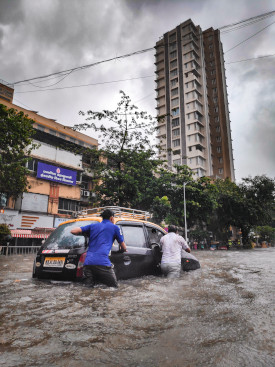
Plastic waste blocked storm drains in Mumbai, India which exacerbated the deadly flood of 2005, a new report by the charity organization Tearfund suggests. (Photo: Saikiran Kesari, Unsplash, Fair Use)
DYKSTRA: Well, let's go from drought to flood. Because in Mumbai, back in the year 2005, a flood that killed over 1000 people, it's finally been determined to have been caused largely by the flow of plastic towards storm sewers, that block those storm sewers, leading to the very, very high death toll.
DOERING: Wait, so you're telling me that plastic is not only causing, you know, the huge problems that we're seeing in the environment with animals ingesting it, especially in the oceans, but it's also piling up in storm drains, and potentially contributing to floods?
DYKSTRA: Plastic is getting us in a lot of different ways. And of course, it's a product with the petrochemical industry. So another tie there is that those petrochemical refineries are a source of greenhouse gas emissions that are the main culprit in our changing climate. All of this has led to an effort by the United Nations to bring together a global treaty to reduce plastic pollution by as much as 80% by the year 2040.
DOERING: Yes, they're meeting in Paris as we speak, these negotiators, and I think in the next couple of weeks, we'll have an update. Well, what do you have for us from the history books this week, Peter?
DYKSTRA: Here is something to salute on our history page this week. It's the 100th anniversary, June 8, 1923, of the Bryce Canyon National Monument declared by U.S. President Warren G. Harding. Five years later, in 1928, Bryce Canyon was elevated to full National Park status.

Bryce Canyon was named a National Monument in 1923 by President Warren G. Harding. The now National Park turns 100 on June 8th, 2023. (Photo: Alexander C. Kafka, Flickr, CC BY-ND 2.0)
DOERING: Yeah, those National Parks in Utah really are stunning, Peter, I mean, all these red rocks, the steep spires and crevices that Bryce Canyon has, I mean, it's been years since I was there with my family, but have you been there?
DYKSTRA: They're still on my bucket list.
DOERING: So, a very happy 100-year birthday to Bryce Canyon. Peter Dykstra is Living on Earth's contributor, and we'll talk to you again next week, Peter.
DYKSTRA: Alright, Jenni, thanks a lot. We'll talk to you soon.
DOERING: And there's more on these stories on the Living on Earth website. That's loe.org.
Related links:
- The Washington Post | “Uruguay, Hot and Dry, Adds Salt Water to Public Drinking Supply”
- The Guardian | “Plastic Waste Puts Millions of World’s Poorest At Higher Risk From Floods”
- The National Park Service | “Bryce Canyon”
- Read the Plastic Pollution Survey by Tearfund
[MUSIC: Roswell Rudd & Heather Masse, “Winter Blues” on August Love Song, by Roswell Rudd, Red House Records]
Curbside Capture of Desert Rain
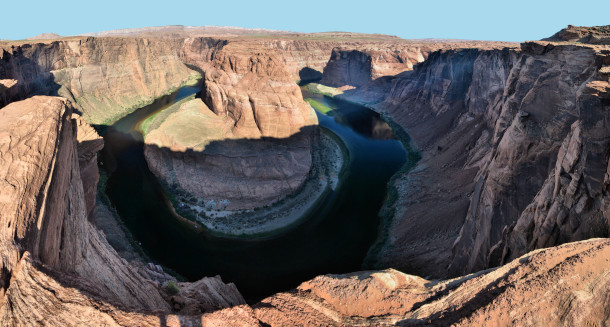
The city of Tucson, Arizona, imports the majority of its water from the drought-stricken Colorado River, via the 336 mile long Central Arizona Project Canal. (Photo: John Morton, Flickr, CC BY 2.0)
CURWOOD: Climate disruption is the main culprit for the blistering megadrought that has plagued the southwest US for decades, though this year winter snows helped encourage water negotiators in Arizona, California, and Nevada. Those states were able to agree to reduce their use of the Colorado River by three million acre-feet of water over the next three years, with the help of some federal money, but at best it’s a temporary solution. One of the biggest customers of Colorado River water is Tucson, Arizona, which taps the 336-mile-long Central Arizona Project Canal. Rainfall dumps roughly a million gallons per mile per year on Tucson’s residential streets, and most simply goes down storm drains. But a precious portion of this renewable resource stays behind. Thirty years ago, the Dunbar Spring Neighborhood Foresters Organization started harvesting local rainwater by directing runoff into side-street basins filled with native, food-bearing plants. Brad Lancaster, co-founder of the organization, joined Living on Earth’s Bobby Bascomb to tell how “planting the rain” improves neighborhoods, builds climate resilience, and helps the desert bloom.
BASCOMB: So, paint a picture of Dunbar Spring for us. What does it look like today?

About a million gallons per mile per year of rain falls on typical Tucson residential streets, but the majority of that local water disappears down storm drains. (Photo: Brad Lancaster)
LANCASTER: Well, today, the majority of our streets are lined with native food-bearing trees and understory plants. So, you get to walk through these wonderful tunnels of edible shade. And we've got over two dozen native bird species that have returned to our neighborhood since we've regrown their habitat, that sing to you as you walk along. We have bicycle boulevards going through our neighborhood, which used to be speeding streets, and lots more families than there used to be. And even goats.
BASCOMB: Goats! Tell me more about the goats.
LANCASTER: So we've got some goats, we take them on walks once a day.
BASCOMB: Oh, my god. That sounds adorable.
LANCASTER: Well, and they're great, too, in that they help us prune the pathways from knee-level down. And they're kind of unofficial mascots of some of our efforts.
BASCOMB: Oh, my gosh, I love it so much. And I understand that this is not what it looked like, you know, just 30 years ago. What did you start with? And how did you even get started on a project like this?
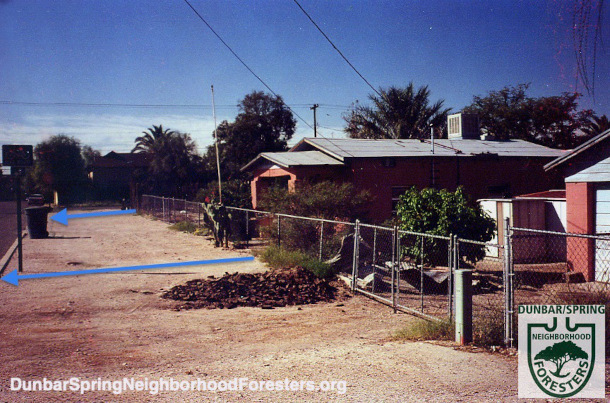
Thirty years ago, the Tucson neighborhood of Dunbar/Spring had little to no street trees, making exposed streetscapes unbearable in the summer months. The blue arrows indicate lost water flow to the street. (Photo: Brad Lancaster)
LANCASTER: Yeah, so my brother and I moved to the neighborhood in 1994. Wonderful neighborhood, extremely diverse, but the public rights of ways, the streetscapes, were for the most part solar oven-like experiences. There was very few street trees, and we're the third fastest-rising temperatures of any city in the US. So, you didn't really want to be out and about where you might interact with a neighbor in the hot months. And what got us wanting to shift all that is when we moved to the neighborhood, the neighbors were being facilitated by a local architect to see, what did the neighborhood want? So, people wanted more tree planting. There had apparently been some tree planting projects in the past, but many of those trees didn't make it. So, I was young and full energy, so I decided to step up and spearhead that effort.
BASCOMB: And you just mentioned that a lot of trees were planted, but they didn't survive. What did you do differently?
LANCASTER: Well, first off, we did some research on what trees were planted in the past, and found that they were all exotic trees. None of them were native to the area. And they were susceptible to drought, cold, insect damage, especially if they weren't watered regularly. So we then looked to our native environment. We have over 400 native food-bearing plants, many of which are trees, in the Sonoran Desert. And then we went further. Instead of just using the hardy native trees, we also researched, which were the trees that produced multiple benefits for many lives, people and otherwise. So, we looked at what were traditionally used as food trees, medicinals, craft materials like fiber, dyes, and so forth. And then we prioritized those trees amongst our native trees to set our tree list.
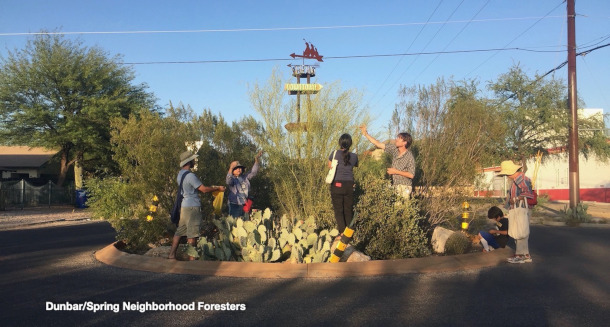
Over the last few decades, the Dunbar/Spring Neighborhood Foresters Organization has planted native, food bearing trees and understory plants in streetside basins that take advantage of local rainwater harvesting. (Photo: Brad Lancaster)
BASCOMB: So, both native trees that were going to survive better and offer some sort of useful product to the people living in the neighborhood.
LANCASTER: Yeah, because we wanted to have more potential deeper relationships. And we didn't want people just to look upon it as shade or beauty. We wanted them to see well, you know, it's a living pantry. It's a living pharmacy. It's a living hardware store and craft shop. And it's this amazing habitat for all this wildlife that had disappeared from our neighborhood when we removed their habitat.
BASCOMB: Well, can you give us a few examples of the specific plants that you planted there and how they're used by people?
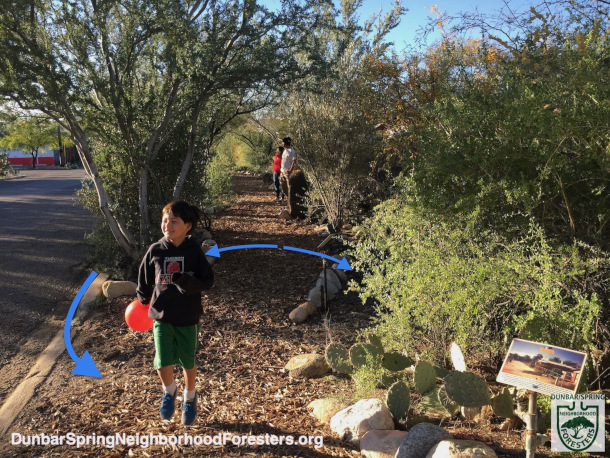
The neighborhood is now lined with shaded pedestrian pathways. (Photo: Brad Lancaster)
LANCASTER: So one of the trees is the native velvet mesquite tree. It has edible seed pods and wonderful edible sap as well that's a great throat lozenge and desert candy. And it fixes nitrogen in the soil. Then there's the desert ironwood tree, which has green seeds when immature, that you can process and eat like edamame. And then when they mature, you can process and eat them like peanuts. Then there's the paloverdes. And they have edible yellow flowers and kind of like green bean-flavored seeds when immature. And then once they mature, we can grind them up into a cornmeal-like flavor.
BASCOMB: Amazing. I mean, I have to say, I wouldn't know the first thing to do with any of these plants. To what degree did you have to do some community outreach to allow people to use them so they knew what they were working with?
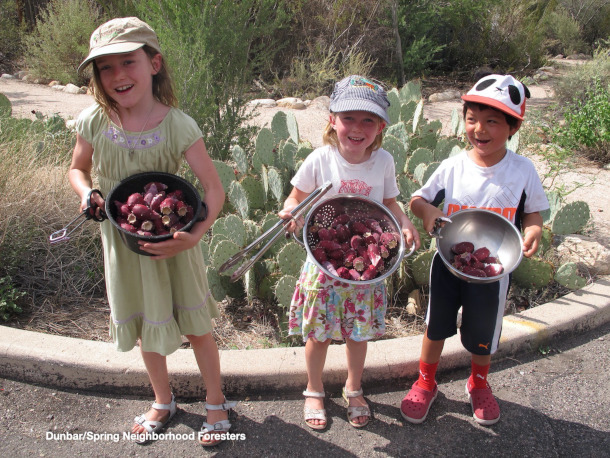
Local residents of all ages are able to harvest edible plants like the prickly pear fruit. (Photo: Brad Lancaster)
LANCASTER: Well, we had to do a fair amount, not just for our neighbors, but for ourselves as well. Because we read about all of this, but we didn't have direct experience with all these foods when we started. So, we sought out folks that had this knowledge, and we also looked to books and just experimented. And the other cool thing is we've collaborated with the University of Arizona Arboretum to put plant identification signs for many of the plants, not just the trees, but the understory plants too, in four languages. So it's the scientific name in Latin, the English common name, the Spanish common name, and the O'odham common name.
BASCOMB: And the O'odham name is the Native American tribe of the region.
LANCASTER: Exactly, yes. And when people hit the QR code on the plant ID sign, it takes them to a page where they can see the plant in bloom, in fruit. It's got ways of preparing it, and tells other plants that it likes to grow with. So people can be educated in many layers on how to grow more of the forest on their block.
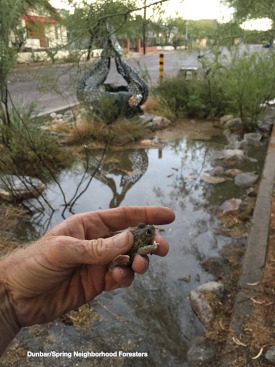
Native plants are also helping restore wildlife habitats in the area. (Photo: Brad Lancaster)
BASCOMB: And to what degree have you seen that? Are people taking this, you know, common space and applying it to their own, you know, private yards?
LANCASTER: Definitely. The neighborhood is much greener than before we started all this. And another key thing is, we really push folks to plant the rain before they plant any plants. And that's another thing that sets our planting project apart from most, because a typical tree planting project is bringing in water from the municipal system. So water imported from elsewhere, because in Tucson, the bulk of our water comes from the Colorado River, and we pump it from over 300 miles away. So we wanted to use the free local water because we found that you know, the average one-mile stretch of our neighborhood drains enough rainfall to support over 400 trees per mile, or one tree every 25 feet on both sides of the street -- if we direct the street runoff to streetside basins, as opposed to out of the system.

The Neighborhood Foresters now collaborate with contractors to drill holes in street curbs, allowing rainwater to be directed into plantable basins rather than into storm drains. (Photo: Brad Lancaster)
BASCOMB: Well, tell me more about how you're directing water exactly where you want it to go, and how it's, you know, maybe staying on the land a little bit better, and that might be useful in you know, a very dry area like Arizona.
LANCASTER: Our streets for the most part are raised or crowned in the middle, so they drain water to either side. So water will flow along that curb. And we noticed that it would kind of lap up where there'd be a dip in the curb. So we started to cut the curb or notch the curb where there was all this plantable unpaved dirt on the household side, but no access for the water. So we would cut the curb at that point, dig the basin down, and then when it would rain, water would flow down the gutter, go into that curb cut, and once the basin would be filled, water would backup to the inlet point. And then the surplus would go down the gutter to the next basin. And now our average basin size is eight feet long, five feet wide and one foot deep, for an annual minimum capacity of 4,500 gallons per year. And that's enough water to sustain all the water needs of the tree we plant beside or within that basin and all the understory plants as well, with surplus water to then directly recharge the aquifer.
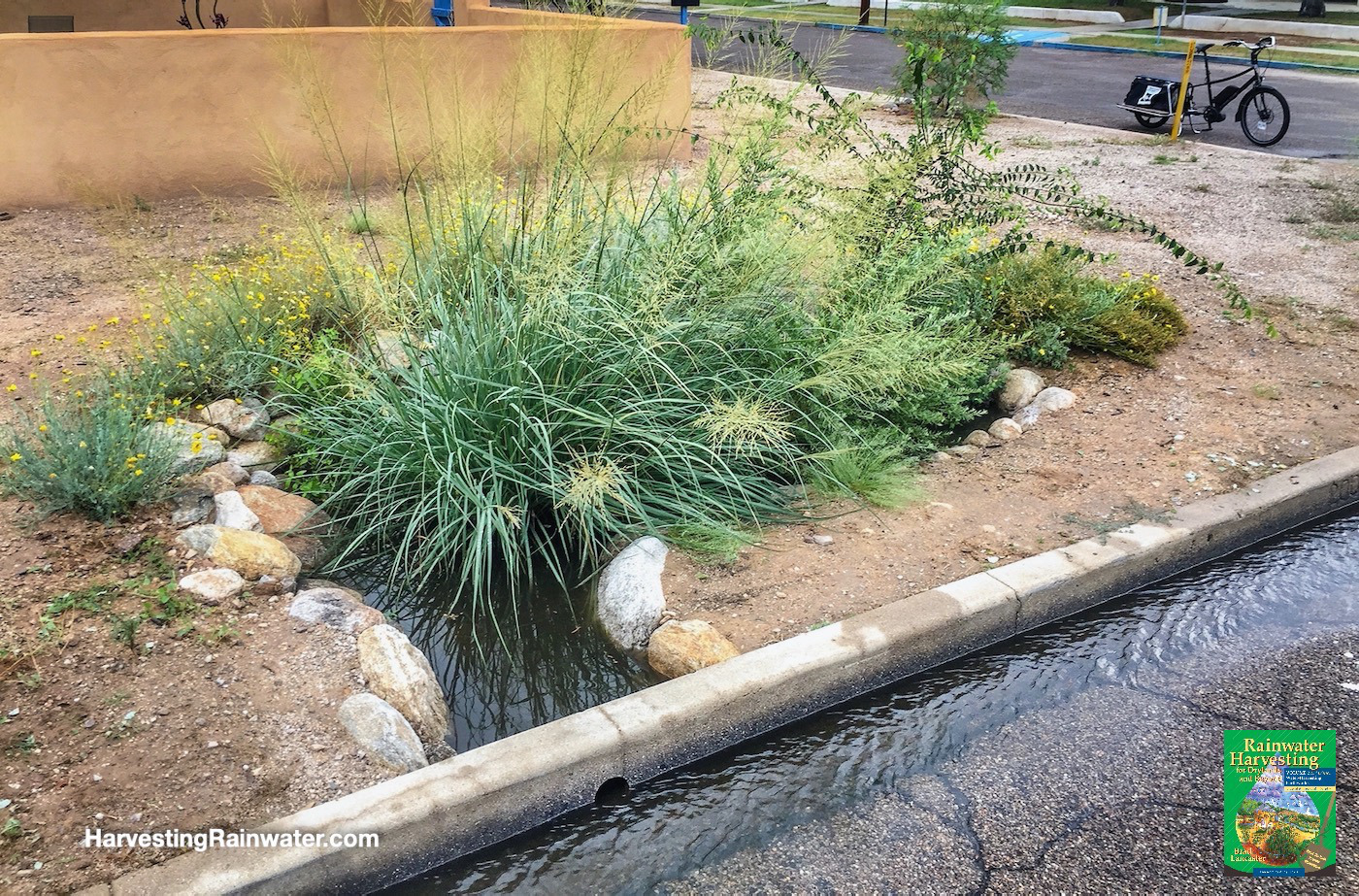
The average Dunbar Spring streetside basin has an annual minimum capacity of 4500 gallons of stormwater per year. (Photo: Brad Lancaster)
BASCOMB: And this isn't you know, some great technology that needs to be invented that we're talking about. These are really very simple techniques that you've, you know, implemented.
LANCASTER: Yes. And indigenous techniques to this place. The O'odham, the indigenous people of this place, they would harvest water flowing down an ephemeral arroyo, or creek, during a storm. And they would direct it into the adjoining flood plain, where they'd grow their crops. We're doing the same thing. But in this urban setting, the paved street is the arroyo, or the waterway. So we lost the bulk of this knowledge when there was active efforts to eradicate it from the indigenous knowledge in the Indian schools and so forth. They would punish you for practicing some of this stuff. So we're trying to bring it back. And it's a slow rebuild, but it's definitely happening.
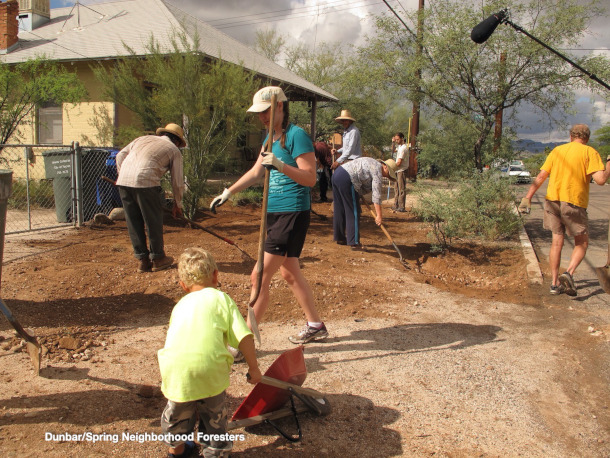
Urban rainwater harvesting has roots in indigenous O’odham knowledge. (Photo: Brad Lancaster)
BASCOMB: Well, we know that the region is expected to get hotter and drier in the coming years with climate change. And already the Colorado River that much of the West depends on is at record lows. How do you think this type of urban planning should be worked into western communities going forward? And for that matter, how scalable is it? I mean, you're talking about a relatively small neighborhood. Can something like this be done, you know, on a city level, like Las Vegas or Los Angeles even?
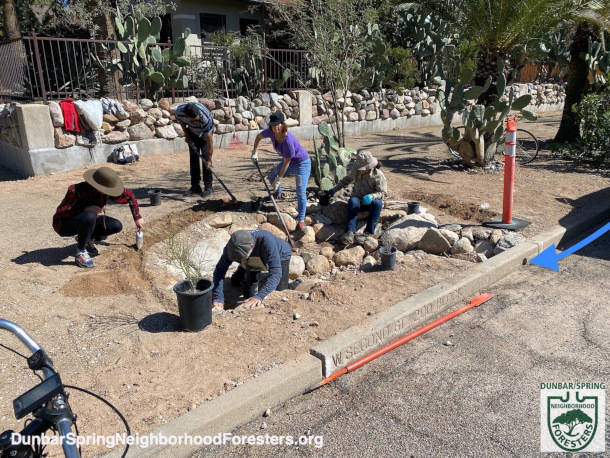
The Neighborhood Foresters hope to spread rainwater harvesting techniques to other areas in the west and beyond. (Photo: Brad Lancaster)
LANCASTER: Absolutely. And I've done workshops in both Las Vegas and LA, and the installations we've done have been working fantastic. So, when we started this, it was illegal in Tucson to cut the street curbs. So we just did a guerilla action on a Sunday morning when no one from the city was watching. And then slowly grew it. And then when we had a viable system going, then we approached the city to legalize it. They've since legalized it. They've mandated it in all new city road construction and major road renovation, and they incentivize it with a $2,000 rebate. So this can happen anywhere, doing this in a similar way. And we find there's the greatest cluster of density of water harvesting anywhere there's someone that was already doing it, because most folks don't walk more than a block in their neighborhood unless they got a dog or a goat. So, if they only have to walk a half a block or so to get more information or to see an example, it takes off there.
BASCOMB: I mean, to what degree is this something that could really address the problem of, you know, drought in the West?
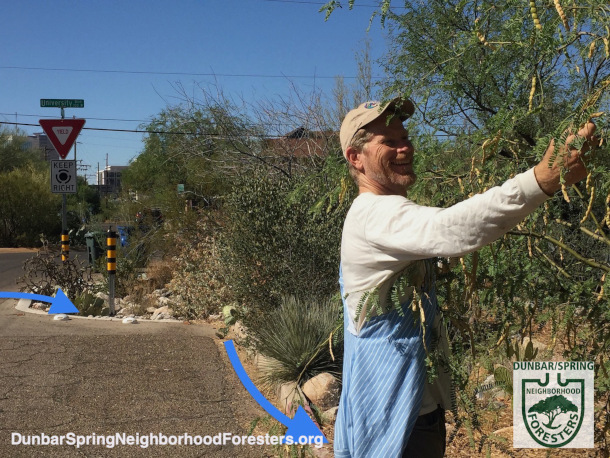
Co-founder of Dunbar Spring Neighborhood Foresters Brad Lancaster says harvesting local rainwater could build drought resilience in larger cities like Los Angeles or Las Vegas. (Photo: Jaime Chandler)
LANCASTER: Well, we should be using rainwater as our checking account water, you know, the water you use on a daily basis. And our groundwater, or Colorado River water, that should be the savings account that you don't touch, except for extreme times of need, like an extreme drought year. But instead, what we're doing today throughout the West, is we're discarding the free onsite waters. And then we're just tapping and draining the savings account for ourselves, our children, and their children.
CURWOOD: Brad Lancaster, a cofounder of the Dunbar Spring Neighborhood Foresters in Tucson, speaking with Living on Earth’s Bobby Bascomb.
Related links:
- About Dunbar/Spring Neighborhood Foresters
- Dunbar/Spring Neighborhood Foresters | “Annual Rain and Native Forest Planting Another Success in 2023”
- Harvesting Rainwater | “Rainwater Harvesting for Drylands and Beyond by Brad Lancaster”
- Living on Earth | “Less Water for the Dry West”
[MUSIC: Eric Tingstad, “Trails End” on Southwest, by Eric Tingstad, Cheshire Records]
DOERING: Next week, with a lot of grit and elbow grease, Poet Camille Dungy transformed her sterile lawn into a diverse pollinator garden teeming with life.
DUNGY: But here’s the blessing that the garden also gives me. That peace, that quiet, that full robust life, the beautiful smells, the sounds, all those lovely birds – I get joy and pleasure and a kind of reciprocal grace from having done that work.
DOERING: Camille joins us to talk about a more inclusive kind of gardening and nature writing and her new book “Soil: The Story of a Black Mother’s Garden,” next time on Living on Earth.
[MUSIC: Stan Samole, “It’s Raining It’s Pouring” on Childish Dreams, Traditional American children’s song/arr. Stan Samole and David Antonacci, Jazz Inspiration Records]
CURWOOD: Living on Earth is produced by the World Media Foundation. Our crew includes Naomi Arenberg, Bobby Bascomb, Paloma Beltran, Josh Croom, Swayam Gagneja, Madison Goldberg, Mark Kausch, Mark Seth Lender, Don Lyman, Jusneel Mahal, Sarah Mahaney, Aynsley O’Neill, Sophia Pandelidis, Jake Rego, Clare Shanahan, El Wilson, and Jolanda Omari.
DOERING: Tom Tiger engineered our show. Alison Lirish Dean composed our themes. You can hear us anytime at loe.org, Apple Podcasts and Google Podcasts, and like us, please, on our Facebook page -- Living on Earth. We tweet from @livingonearth. And find us on Instagram @livingonearthradio. And you can write to us at comments@loe.org. I’m Jenni Doering.
CURWOOD: And I’m Steve Curwood. Thanks for listening!
ANNOUNCER: Funding for Living on Earth comes from you, our listeners, and from the University of Massachusetts Boston, in association with its School for the Environment, developing the next generation of environmental leaders. And from the Grantham Foundation for the protection of the environment, supporting strategic communications and collaboration in solving the world’s most pressing environmental problems.
ANNOUNCER 2: PRX.
Living on Earth wants to hear from you!
Living on Earth
62 Calef Highway, Suite 212
Lee, NH 03861
Telephone: 617-287-4121
E-mail: comments@loe.org
Newsletter [Click here]
Donate to Living on Earth!
Living on Earth is an independent media program and relies entirely on contributions from listeners and institutions supporting public service. Please donate now to preserve an independent environmental voice.
NewsletterLiving on Earth offers a weekly delivery of the show's rundown to your mailbox. Sign up for our newsletter today!
 Sailors For The Sea: Be the change you want to sea.
Sailors For The Sea: Be the change you want to sea.
 The Grantham Foundation for the Protection of the Environment: Committed to protecting and improving the health of the global environment.
The Grantham Foundation for the Protection of the Environment: Committed to protecting and improving the health of the global environment.
 Contribute to Living on Earth and receive, as our gift to you, an archival print of one of Mark Seth Lender's extraordinary wildlife photographs. Follow the link to see Mark's current collection of photographs.
Contribute to Living on Earth and receive, as our gift to you, an archival print of one of Mark Seth Lender's extraordinary wildlife photographs. Follow the link to see Mark's current collection of photographs.
 Buy a signed copy of Mark Seth Lender's book Smeagull the Seagull & support Living on Earth
Buy a signed copy of Mark Seth Lender's book Smeagull the Seagull & support Living on Earth

